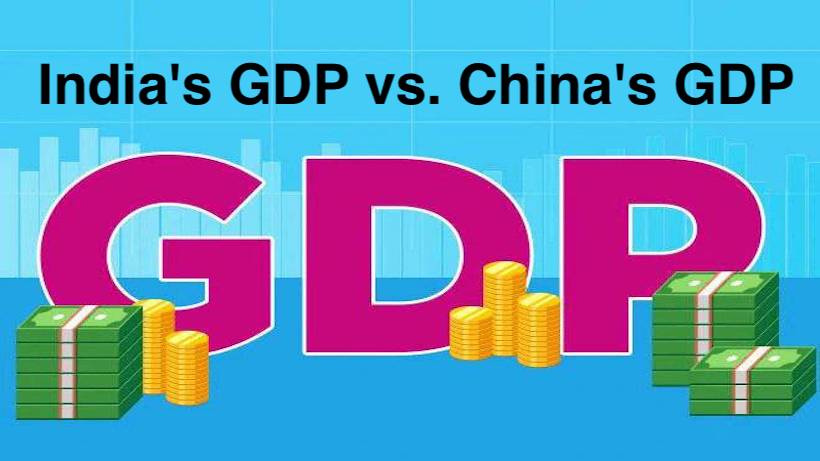India’s GDP vs. China’s GDP: At present, the GDP of China is about six-fold the GDP of India. While the GDP of India is about 4.19% of the total world, the GDP of China represents about 19.74% of the global economy (Trading Economics, 2019).
Quick Links
India’s GDP vs. China’s GDP
There are various reasons why the GDP of China is way higher than that of India at present even though their GDPs were highly comparable about seven decades ago. First, there is a widespread thinking that China, unlike India, is defined by a bureaucracy that is highly agile compared to what the bureaucracy’s scope and size suggests. Notably, the Chinese bureaucratic systems, unlike the Indian bureaucratic systems, do not unavoidably invite marked government intervention in trade. In recent decades, China has been characterized by a marked level of ideological flexibility that is not characteristic of communist regimes (Vasudeva, 2006)
Second, it is widely thought the culture of making savings is more entrenched in China than it is in India. Notably, savings portend investments. Investments occasion economic development as well as growth according to Guirdham (2009). In recent times, the Chinese people have become more and more of investors and less and less of consumers. The cumulative net savings across China have facilitated lots of capital development and investment in the country.
Third, the consumer spending as opposed to savings registered by India annually is more than the consumer spending registered by China annually. That is possibly owing to the countries’ different political regimes. India, unlike China, is a democracy. Democratic governments, including the Indian government, are inclined towards fostering sociopolitical milieus that encourage consumerism. They are inclined towards allowing or even prodding individuals to pursue happiness through spending.
Authoritarian governments, including the Chinese government, are disinclined towards fostering sociopolitical milieus that encourage consumerism (Hilton, 2009). They are disinclined towards allowing or even prodding individuals to pursue happiness through spending. The Chinese government has for many years been enforcing a savings and investment culture. It has been guiding investment towards development and commercial projects that are capitalintensive. Such projects occasion high levels of economic growth over time typically
Fourth, in the current globalization age, China has been registering more foreign investment than India (Cravino, Lederman & Olarreaga, 2007). China appears to have more effective foreign investment approaches and policies than India. China has in recent times been investing quite aggressively in other economies, especially in other Association of Southeast Asian Nations (ASEAN) economies.
Fifth, there is widespread thinking that China has had a better form of multi-order governance than India for coping with the present-day world sociopolitical and socioeconomic order typified by globalization and information revolution (Boadway & Shah, 2009). Globalization and information revolution have continued to push the demand for open decision making in government and governance systems that are de-layered, effective, and open in addition to lean upwards.
In India
State, and Central governments play a major role in the allocation of government inputs since they have significant administrative and legislative powers. Various Sates in India account for approximately 57% of total expenditures in India. Most Indian firms depend on public officials and inputs supplied by the government to facilitate various aspects of their operations. Indian firms face a regulatory burden to expand or contract production, and hire and fire employees.
The regulatory burden is significantly higher in India just for the sake of creating more documentation when compared to international standards. These aspects led to a unholy nexus and cause impediments for growth in India.
largest economy
The largest economy at present is the US. China is the second largest. Japan is the third largest. German is the fourth largest. The UK is the fifth largest economy. France is the sixth largest economy. India is the seventh largest economy. Italy is the eighth largest. Brazil is the ninth largest while Canada is the tenth largest economy globally according to Kapoor (2018).
Comparison between the economy of India and other developing nations such as Argentina, Malaysia, Mexico, Nigeria, North Korea, and Yemen would highlight the position of the country in the globe, as India’s economy is much larger than the economy of most of these developing countries in terms of GDP. However, in terms of per capita GDP, India lags behind Argentina, Malaysia, Mexico, and Nigeria. North Korea and Yemen have lower GDP and per capita GDP than India.
Though, India is striving to achieve economic development to match the economies of developed nations, India has a long way to go to match these economies. However, India has a larger economy than underdeveloped countries such as Chad, Afghanistan, Haiti, and Myanmar.
Read Relevant Articles
- Interest Rate of NSC, PPF, KYP, SSY, SCSS
- How to get loan against PPF
- Sectoral Mutual Funds
- Mutual funds Pros and Cons
- Retail Investors and Mutual Funds
- Best Long Term Investment Plans
- KVP, PPF, NSC Which is best?







